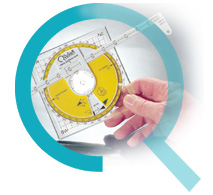  |
|
QuDieM NAVIGATOR offers the typical PPL pilot and student a practical and easy to use navigation aid, suitable for pre-flight and in-flight VFR and Radio Navigation planning and plotting without the need for any additional rulers, protractors etc. This package of features, convenience and simplicity is unique. |
||
|
|
There is no requirement for measurements or markings. | |
|
|
QuDieM NAVIGATOR is tailored to airspeeds of 100kts �10%, a range covering the cruising speed of the majority of single engine light aircraft. Careful design has ensured that the indicated wind compensation accuracy over this speed range is well within practical limits. With no need for supplementary plotting or computing tools, QuDieM NAVIGATOR is a uniquely versatile and convenient aid that is equally suited to pre-flight and in-flight planning. The capability to easily plan a diversion without reliance on the mental application of traditional "rules of thumb" under exam conditions makes it particularly relevant to student pilots undertaking their navigation skill test. Compatibility with VOR and NDB tracking and position locating ensures that whatever the navigation challenge, QuDieM NAVIGATOR is the aid you will want at hand. |
